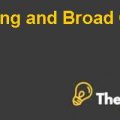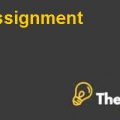The Stinson Family Profile Case Study Solution
CERTIFIED FINANCIAL PLANNER DESIGNATION:
A certified financial planner engages with the investors and discusses about their financial future prospects. They are assigned to work on their clients’ retirement plans, and how to save for the tuition fees. A person becomes a certified financial planner by the following procedures:
- Initially, the individual have to go through the CFP Board-registered education program and it can opt from different options for its education. After completing the education, the individual has to inform the CFP board.
- After informing the CFP board about completion of the education, the individual has to sit for the CFP exam. The exam is held thrice in a year in, March, July, and November. The CFP board will provide a location where the individual have to give the exam within the 5-day window.
- To become the CFP holder an individual have to complete the bachelor’s degree. He can sit for the exam before the bachelor’s degree but he will have to make sure to complete the degree in five years.
- Financial planning experience is required after passing the CFP exam. The working experience have to be of minimum three year or it can be two years of apprenticeship.
- The last step is to follow all the rules and regulation of the CFP board. An individual have to work on the ethical standards set by the CFP board. Other than this, the individual have to give verification for his background and there should be no criminal background.
FIDCIARY RESPONSIBILITY:
An investor trusts a fiduciary for their investments. A CFP board legally binds a CFP holder to keep investors’ interest in front of their personal interest. CFP board actually enforces these standards to make sure that the CFP holders are working on the ethical standards.
The ethical standards are important to maintain for the fiduciary as the client trusts them with their property or wealth. The fiduciary has to offer them the exact rates that the CFP board has mentioned in their regulations. Most of the times a CFP holder doesn’t inform about the complete details of the fees that he is charging which is actually against the norms of the CFP board. If the CFP holder will tell about complete details and will provide an efficient advice the clients satisfaction level will rise.
QUESTION 2
1ST OPTION:
| PROS | CONS |
|
As the mortgage is of 15 years rather than 30 years, they will pay off all of their loan in much less time than the second option. |
The Stinson Family have to pay greater monthly payments ($2,849.50) than the second option ($1,921.03) because the number of years are less (15 years) than the second option (30 years). |
|
The Stinson family will incur lesser interest expense than the other option because the interest rate is 3.8% as compared to 4.25%. |
|
|
As there are lesser number of payments, the Stinson family can have more cash after 15 years for other purchases. |
2nd OPTION:
| PROS | CONS |
|
The family have to pay less monthly payment of $1921 as compared to $2849. |
The Stinson Family will incur higher interest expense. |
|
They have got more time for paying off their mortgage loan. |
|
|
As they will have less monthly payment, they will have more cash for short-term purchases. |
Exhibit 1 shows the mortgage loan payments for the two options.
QUESTION 3
EXHIBITS
| 1st option | 2nd option | |
| annual rate | 0.038 | 0.0425 |
| monthly rate | 0.0032 | 0.0035 |
| years | 15 | 30 |
| periods | 180 | 360 |
| installment | 20% | 20% |
| original loan amount | 385000 | 385000 |
| refinance cost | 5500 | 5500 |
| loan amount | 390500 | 390500 |
| down payment 20% | 78100 | 78100 |
| Monthly payments | ($2,849.50) | ($1,921.03) |
.............
This is just a sample partical work. Please place the order on the website to get your own originally done case solution.










